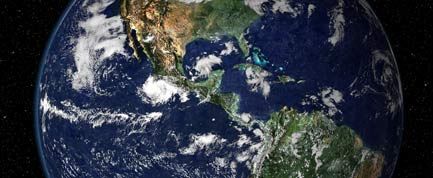Earth's Worst Extinction a Prolonged Event

The rise of mollusks across the globe was a harbinger of doom roughly 250 million years ago, ushering in the most devastating mass extinction in Earth's history, research now reveals. This clammy conclusion suggests the disaster was long in coming, as opposed to the result of a more catastrophic extraterrestrial cause such as an asteroid impact, scientists added. The largest die-off in Earth's history was not the cataclysm that ended the Age of the Dinosaurs some 65 million years ago. Instead, it was the so-called end-Permian mass extinction, which eliminated as much as 95 percent of the planet's species before even the earliest dinosaurs strode the planet. One supposed consequence of this mass extinction was the dominance of oysters, snails and other mollusks all over the world. Now scientists studying mollusks fossils find they started rising to prominence some 8 million years before the end-Permian. "Our results aren't really consistent with a more catastrophic extraterrestrial cause, such as an asteroid impact—although they don't directly contradict the impact theory either," said researcher Matthew Clapham at Queen's University in Kingston, Canada. Instead, these findings support theories suggesting the end-Permian was triggered by ocean changes long in the making, "the climax of a prolonged environmental crisis," Clapham said. The whole Permian period, stretching from about 300 million to 250 million years ago, saw gradual warming. This would have slowed down circulation in the ocean, eventually leading to very low levels of oxygen in the water. Massive volcanism near the end of the Permian might have wreaked even further havoc on the environment. "Mollusks are better adapted to such stressful and changing environments, and so could have thrived," Clapham told LiveScience. "The abundance of mollusks we see are symptoms of the conditions that ultimately caused the extinction." The research involved gleaning more than 33,000 Permian fossils from blocks of limestone that researchers gathered from China, Greece, Thailand, Nevada and Texas over the course of four years. These blocks were then dunked in vats of hydrochloric acid. Although the acid dissolved the limestone, over millions of years the building blocks of the fossil shells were replaced one by one with silica. This silica resisted the acid and helped the fossils survive. "Most of the fossils were less than one centimeter in size, typically four to eight millimeters [roughly the size of an ant], so it was very delicate work to find them among all of the other detritus in the sample," Clapham recalled. He and his colleague David Bottjer at the University of Southern California detailed their findings online July 30 in the Proceedings of the National Academy of Sciences.
- Timeline: The Frightening Future of Earth
- Image Gallery: Dinosaur Fossils
- Top 10 Ways to Destroy the Earth
Sign up for the Live Science daily newsletter now
Get the world’s most fascinating discoveries delivered straight to your inbox.












